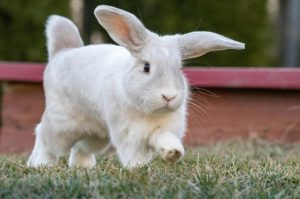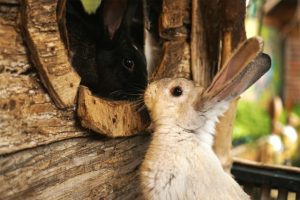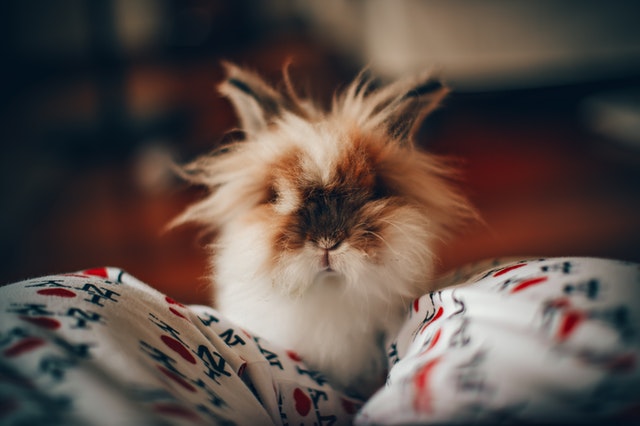
Alopecia is a term used for both humans and animals. It basically means hair loss. There could be many causes for hair loss. In rabbits, it is thankfully not a permanent issue. If you notice that your rabbit is beginning to lose clumps of fur, a trip to the veterinarian is a must do. The causes must be determined so that treatment can be done.
Alopecia in rabbits can be noticed by a thinning of the fur, it could be clumps of fur falling out. Many times, hair loss in a rabbit is common. Other times, your rabbit will need treatment of some sort determined by the vet.
Reasons for hair loss
- Stress is likely the number one cause of hair loss in rabbits. If your rabbit is feeling stressed for some reason, such as too many people around, they are known to pull out clumps of their own fur.
- Behavior Issues can cause alopecia. Rabbits are considered to be social creatures. This is why it is suggested to have at least two rabbits. This is not to say that rabbits are always nice to each other. There are many times when trying to exert dominance, they will pull another hare’s fur out in patches.
- Flystrike is a condition that needs immediate treatment. It is when maggots will burrow under the fur to feed on the flesh. This condition will be noticeable around the hind quarters first.
- Fleas, mites and ticks cause severe itching and can lead to fur falling out.Your vet will assist in treating this.
- Dirty bottoms will cause alopecia also. If the bottom of your rabbit is in wet conditions or remains wet for more than a few days, this can cause infected skin, urine scald and alopecia.
- Moulting is a seasonal issue for most animals. Your rabbit may lose big areas of fur loss, but this will not lead to baldness
- Tumors could cause hair loss in rabbits. Cancer of the testicles, ovaries or skin would be the likely culprits. These cases are very rare.
- Pregnancy is a common time when a rabbit may pull their own fur out. They do this to create their nest. Alopecia can also happen during false pregnancy or when feeding the young.
- Health conditions such as arthritis, skin infections or those leading to ringworm will also cause the fur to fall out. These can all be treated by your animal’s vet.
Other health issues that can cause fur shedding include parasite infections, dental problems, UTI’s or other health problems. It is highly recommended that when you notice any type of skin issues with your rabbit, that you make an appointment to have your rabbit checked by a vet who has a full understanding of rabbits and their health.
Signs and symptoms
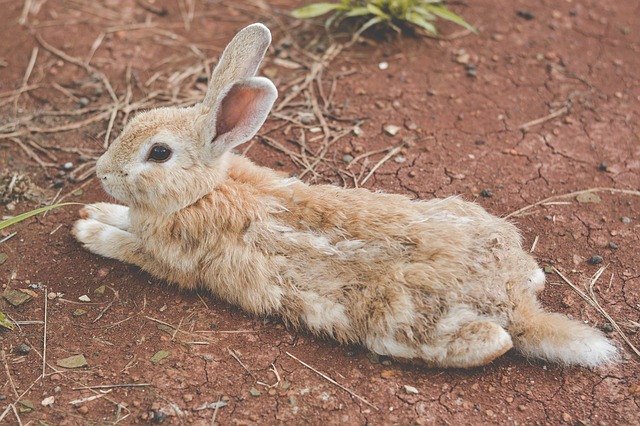
There are many signs that something is wrong with your rabbit’s health.
Some of what you need to watch for and be aware of are:
- If there is an excessive amount of self grooming happening.
- Smelly skin
- Dandruff
- Itchy skin
- A red rash, bumps or scabs on the rabbit’s skin
- A change in your rabbit’s behavior
It is important to understand that a rabbit will ‘change’ fur twice a year. This is common. If everything is normal, the new fur grows in as the old falls out. However, there are some cases where a rabbit seems to be continuously shedding.
The most common cause of this is in-breeding. This causes a disruption in the genetic happenings in your rabbit. You can help your rabbit to ensure that there are no further serious issues. You recognize that a rabbit does plenty of self grooming. This can sometimes lead to hair balls.
Hair balls are very troublesome to a rabbit. When you groom your rabbit, such as brushing, petting and further actions, this will help to remove much of the fur that can cause issues in the intestinal tract. Using a small soft, wire brush will help remove any loose fur, also if you do the wet hand brushing, this will take away the majority of the fur that is loose. Feeding your rabbit a proper diet will assist in pushing any hair through the intestines.
When your rabbit is going through a normal cycle of molting, it is very important that they have a free choice of foods. Fresh hay, wet greens and an unending cycle of fresh clean water is what a rabbit will naturally go for when left to fend for themselves in the wild. It is no different for domesticated rabbits.
Treatment and prevention
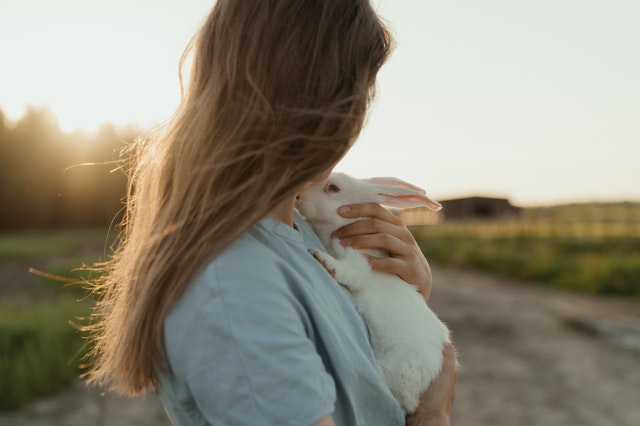
Your vet will prescribe certain medications for the different infections or issues that he or she can treat.
Some of these treatments will include:
- Selamectin and the older version of ivermectin. The Selamectin is a topical ointment that you will need to apply to the affected areas. The older version of this is ivermectin which is an injection given to the rabbit. Ivermectin is not used as often as Selamectin as it does not last as long.
- You may see shampoos and other remedies that are listed as safe for the treatment of these issues, they have the ingredients of permethrin or pyrethrin which are used for mites. These are NOT suggested as a substitution for a visit to the vet. These items are not considered as safe or as effective as what the vet will provide for your rabbit.
- There are also topical ointments or mineral oil available over the counter as treatments for ear mites. Those can actually make the situation and health issue worse and lead to the death of your rabbit.
- Frontline is a common, well known treatment for fleas, DO NOT use this on your rabbit! Frontline can and often leads to neurological issues or worse for the rabbit.
The pattern and type of hair loss will be determined by your rabbit’s vet. The vet will determine if it is a primary reason or a secondary cause. Primary means that the fur loss is common and will happen to the rabbit, such as molting or pregnancy. Secondary is the loss of fur due to an infection or other disorder.
Your vet will likely do a scraping of the skin cells and then a biopsy to determine if it is due to primary or secondary causes. The biopsy will rule out fungal infections, parasite or bacterial issues. Further testing may include urine samples, x-rays and blood tests.
If the alopecia is determined to be from the rabbit’s partner over grooming, or exerting dominance, also known as barbering, the vet will likely have the rabbits separated for a time. Follow up care is a necessity to ensure that the cause does not happen again, If it does, further investigation into the cause will be needed.
What you can do to prevent alopecia due to secondary causes are to groom your rabbit, continue with the proper suggested diet and maintain a clean shelter for your rabbit. The diet must include an appropriate amount of protein.
However, since there can be so many possible causes for alopecia, there are no exact and perfect recommendations. Follow the proper routines for shelter, cleaning and diet and you can rest assured that you have done all you can do. There are going to be times when alopecia happens and there is no underlying cause.
Pay attention to the behavior that your rabbit is exhibiting. This behavior will tell you when there is something wrong. The fur loss can be extremely itchy and irritating for the rabbit. This causes pain and severe discomfort. When your rabbit is showing signs of pain, discomfort or there are obvious sores, scabs and dandruff showing, a professional is the only person that can truly determine the cause and recommend the treatment.
This is not the time to ignore the issue, nor is it the time to listen to someone who knows nothing about the health of rabbits. Learn the difference between molting, which is done up to twice a year, and something that is obviously painful for your pet. Molting, the biannual shedding will begin at the neck and work down towards the flanks.
Even with the treatment given by the vet, there are signs you need to be aware of that cause concern. Watch the rabbit for lethargy, weakness, pale mucous membranes and depression. If any of these are noticed, make a return trip to the vet as quickly as possible. The vet may need to give IV fluids and corticosteroids.
This is why it is so important to not self diagnose your rabbit. Only a veterinarian that has training for rabbits will be able to correctly determine the health status of your rabbit.



